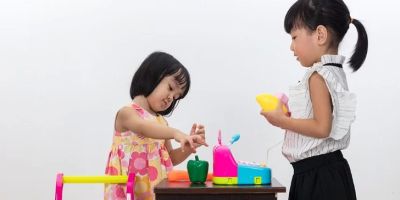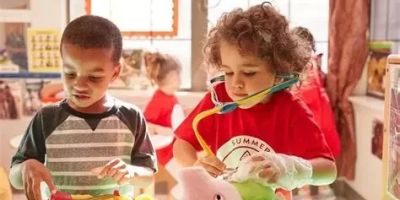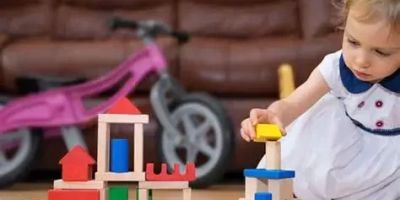Using Toys to Encourage Teamwork and Cooperation in Children
As a parent, I’ve always been intrigued by how simple activities can have a profound impact on a child’s social development. One of the most valuable lessons I wanted my children to learn early on was teamwork and cooperation. I’ve seen firsthand how essential these skills are not only in school but throughout life. Over time, I discovered that toys and games play a crucial role in promoting these skills. By choosing the right toys, children can learn to work together, communicate effectively, and solve problems as a team. I’ve found that it’s not just about playing with the toys, but how the toys are used to create shared experiences that build collaboration. Let me share some of the best ways I’ve used toys to encourage teamwork and cooperation in my kids.
1. Group Building Games: Encouraging Communication and Problem Solving
When I first introduced group-building games to my kids, I wasn’t sure how they would respond. I quickly learned that group activities, especially those that require problem-solving and communication, are fantastic for teaching cooperation. Toys like building blocks, puzzles, and cooperative board games, like “Outfoxed!” or “The Forbidden Island,” are excellent choices. These toys are designed to require the players to work together to achieve a common goal, rather than competing against one another.
For example, I remember playing “The Forbidden Island” with my children. In the game, the team works together to capture treasures from a sinking island before it disappears. This type of game forces them to communicate, strategize, and delegate roles to one another. I’ve noticed that when they play these kinds of cooperative games, they focus on group success over individual achievement, which helps foster a sense of shared responsibility. It also encourages patience, as they have to wait for each other’s input and make decisions together.
2. Toys That Require Team Effort: Building and Creating Together
Another effective way to promote teamwork is through toys that require collaboration to build or create something larger than themselves. When I introduced toys like LEGO sets and large building blocks, I found that they provided the perfect opportunity for my children to practice cooperation. They would work together to build intricate structures, with each child taking on specific tasks based on their strengths. It was amazing to see how they would communicate ideas, negotiate roles, and resolve disagreements during the building process.
The great thing about these toys is that they allow for a wide range of creativity. Whether they’re constructing a tower, a spaceship, or an entire city, the process requires a lot of teamwork to make sure the final product is stable and successful. I often encourage them to work on projects where they need to share pieces, take turns, and combine their individual ideas into a cohesive whole. Over time, I noticed that they developed not only stronger communication skills but also a sense of pride in their collective achievements.
3. Active Toys for Physical Cooperation
It’s not just about quiet, sit-down activities. Physical play can also foster teamwork. I’ve found that active toys, such as jump ropes, hula hoops, or even sports equipment, help children develop cooperation while having fun. For instance, when my kids played with a jump rope together, they had to work in sync, timing their jumps to avoid tripping over the rope. At first, it was a little chaotic, but as they practiced, they learned how to coordinate their movements and communicate non-verbally, which is a key aspect of cooperation.
Playing catch with a ball or organizing simple relay races in the yard also teaches teamwork. They quickly realize that one person’s actions affect the whole group’s success. For example, in a relay race, each child has to run their leg of the race and then pass the baton smoothly to the next teammate. Through this type of play, they learn about trust, the importance of supporting each other, and the need to keep trying even when things don’t go as planned.
4. Role-Playing Toys: Teaching Empathy and Collaboration
Role-playing toys are another fantastic way to promote teamwork. These toys, like pretend kitchens, doctor kits, or firefighter gear, provide a unique opportunity for children to work together while adopting different roles. I’ve found that when my kids engage in pretend play, they learn to collaborate and negotiate how to share responsibilities. For example, while playing with a kitchen set, one child might be the cook, while another is the server. They need to communicate to make sure they’re coordinating their actions to create a successful meal.
These types of toys encourage children to take on different perspectives and learn empathy, as they often must consider the needs and feelings of their playmates. They also have to share resources, like food or toys, and divide tasks based on each other’s skills. Over time, I’ve seen my children become more willing to cooperate and take turns in real life, not just in their imaginary scenarios.
5. Outdoor Toys for Collaborative Play
Outdoor toys that require collaborative play are also excellent for teaching teamwork. Whether it’s building a fort, playing tug-of-war, or organizing a scavenger hunt, outdoor activities encourage children to come together and use their collective strengths. One of our favorite activities is setting up an obstacle course in the yard. My kids work together to complete the course, and they help each other through difficult obstacles, offering encouragement and advice along the way.
Through these activities, they’ve learned that cooperation often involves helping others succeed, even if that means slowing down or offering a hand. What’s amazing is that when they work together outside, they not only enhance their teamwork skills but also form lasting memories that strengthen their bond as siblings. Plus, they get plenty of exercise, which makes the whole experience even more rewarding.
6. Toys That Encourage Turn-Taking and Sharing
Many children find it challenging to take turns or share toys, but there are specific toys designed to encourage these behaviors. Games like “Memory” or “Go Fish” require children to wait for their turn, while toys like stacking rings or board games like “Chutes and Ladders” teach children how to share and follow rules. I’ve noticed that when my kids play these types of games, they learn patience and the importance of following social rules, which are critical aspects of cooperation.
At first, my children would get frustrated when it was their turn to wait, but over time, I noticed them becoming more accepting of the turn-taking process. Now, they not only wait their turn patiently but also help each other remember whose turn it is, promoting an environment of cooperation. These types of games can also teach conflict resolution skills when there are disagreements or misunderstandings.





